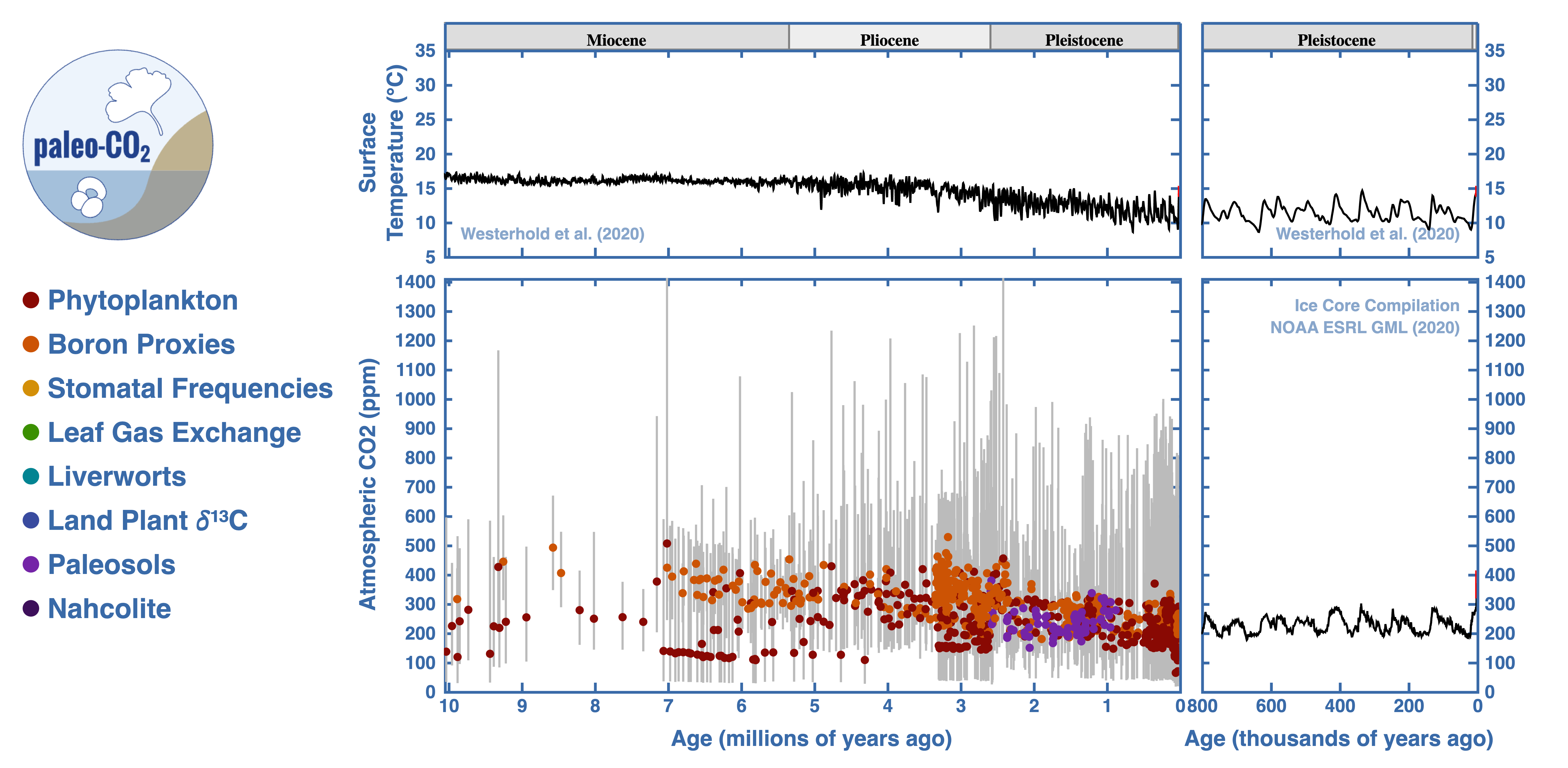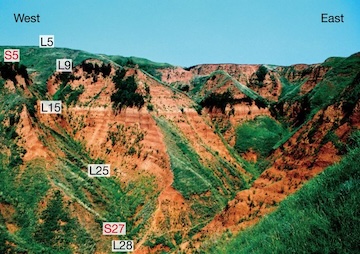Late Cenozoic atmospheric CO2 reconstruction

- Category 1 proxy-derived CO2 estimates over the past 10 million years. Existing records suffer from large uncertainties, low agreements, and data gaps.1
As the nearest geologic time period, the late Cenozoic witnessed major climate transitions such as the Northern Hemisphere Glaciation and the Mid-Pleistocene Transition, as well as time periods widely recognized as analogs of near-future climate such as the Mid-Miocene Climate Optimum and the Mid-Pliocene Warm Period. However, the role of CO2 in these climate events remain unresolved, mainly due to the lack of high-resolution, high-precision CO2 record.

- Pleistocene loess-paleosol sequence on the Chinese Loess Plateau, characterized by light and dark layers formed during glacial and interglacial periods, respectively.2
The Chinese Loess Plateau has been receiving eolian dust deposition since the late Oligocene. Paleosols developed on these eolian deposits contain secondary carbonates, the carbon isotope values of which recorded atmospheric CO2 levels. Leveraging this unique archive, we improved the paleosol-CO2 method by developing new constraint on the input parameters, allowing us to reconstruct a continuous Pleistocene CO2 record with high fidelity. The results show relatively stable CO2 during the interglacial periods and long-term decline in glacial CO2, highlighting the role of CO2 in the amplification of the Pleistocene glacial cycles and the long-term global cooling. Moreover, our CO2 data suggest climate sensitivity remained relatively stable when the Earth’s climate transitioned between glacial and interglacial periods.
Related Publications:
- Da J, Zhang Y G, Liu X, et al. No apparent state-dependency of equilibrium climate sensitivity between the Pleistocene glacial and interglacial climate states, Nature Communications
- Da J, Zhang Y G, Li G, et al. Low CO2 levels of the entire Pleistocene epoch, Nature Communications
- Da J, Zhang Y G, Wang H, et al. An Early Pleistocene atmospheric CO2 record based on pedogenic carbonate from the Chinese loess deposits. Earth and Planetary Science Letters
